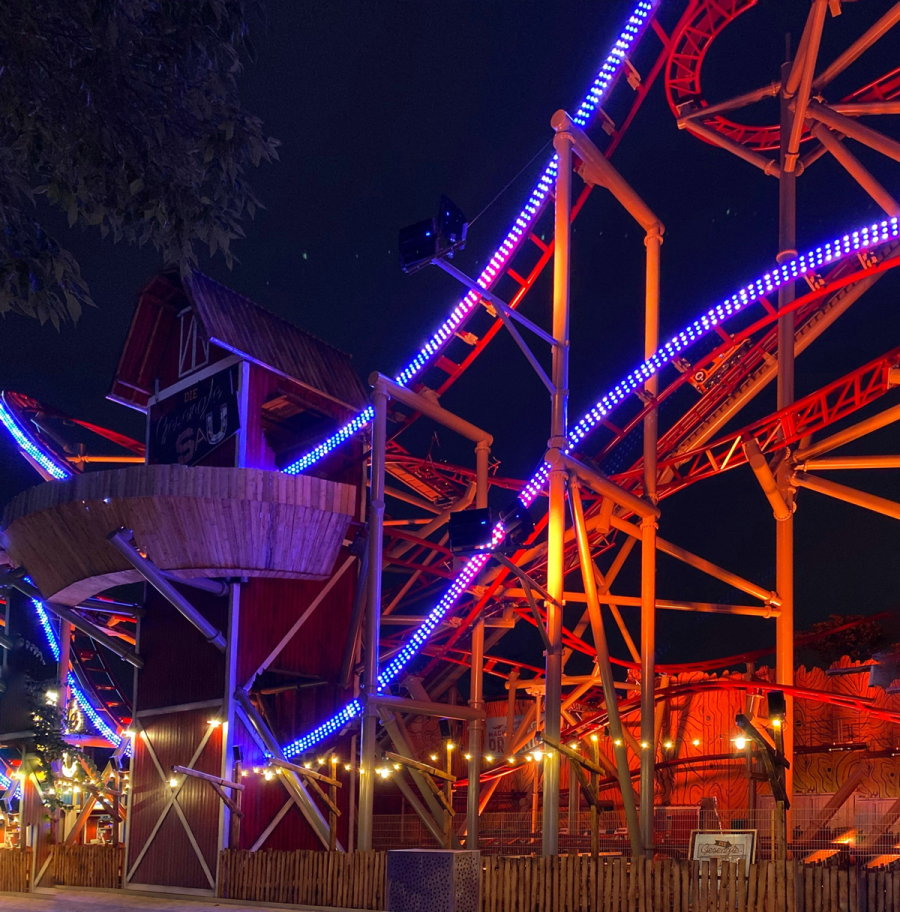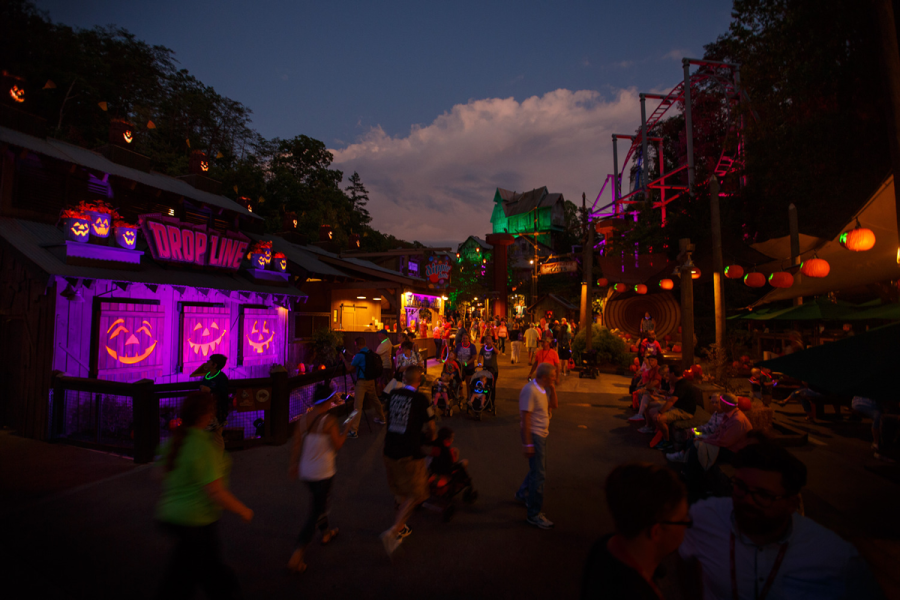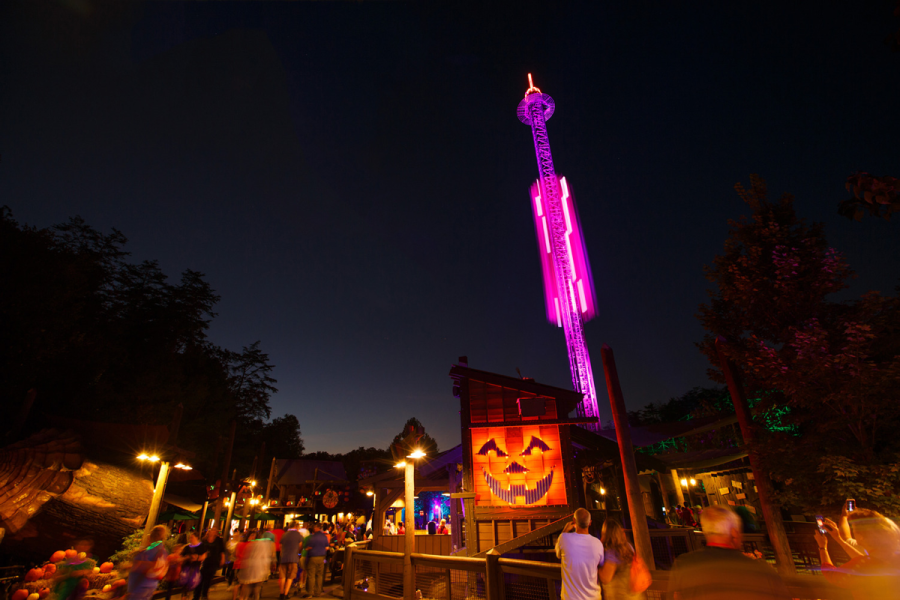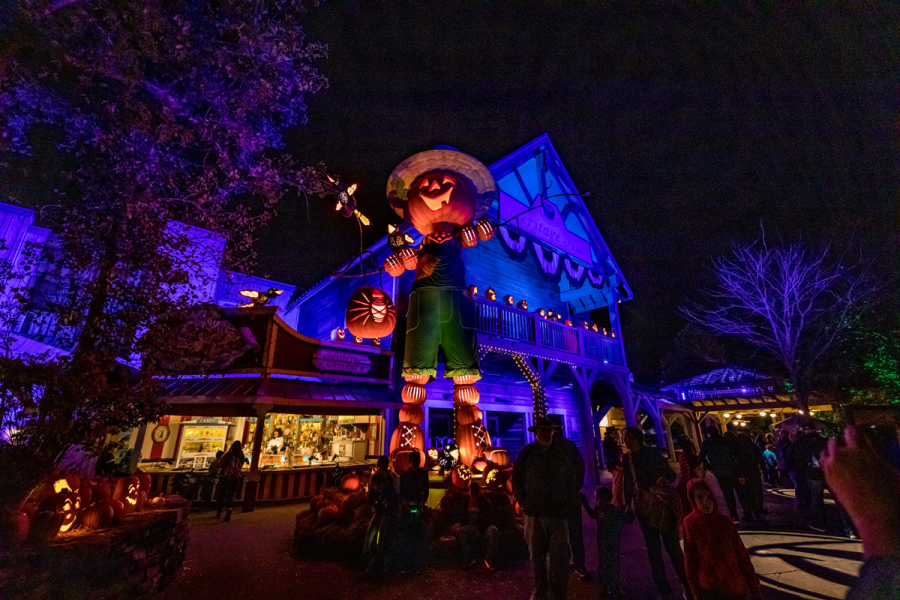Guiding Lights

Lighting an attraction appropriately does much more than illuminate paths and ensure guest safety. To find out the how, what, and why of getting the most from lighting, Funworld spoke to two lighting experts who revealed their tips and tricks.
Add to the Story
Today, everything is focused on storytelling, says Matt Cooper, principal at SPRK, a lighting company based in Lexington, Kentucky.
“When done well, the lighting supports and underlines the creative content and storyline,” Cooper says. “It’s so subtle, it’s not even noticed yet supports the bigger picture.”
For example, a show set should look good no matter what time of day and should be consistent with the chosen narrative, he says.
To coincide with helping to tell an attraction’s story, the illumination can provide an immersive environment for guests, Cooper tells IAAPA News Hub. When applied correctly and in harmony, lighting can totally change the guest’s physical environment.

Enhancing the Guest Experience
Using angle, intensity, and color, lighting can help guests experience different times of day or year and even feel different moods, says Scott O’Donnell, themed environment specialist at ETC, a lighting provider with offices across the United States, Asia, and Europe.
“Lighting can also dictate a guest’s focus—look over here, not over there,” O’Donnell says. “Using LEDs and pixel mapping (a video display technique), parks can make static attractions appear to move, creating dynamic looks that enhance the spirit of the attraction and build a sense of excitement around it.”
Since many guests will rarely think about lighting or how it makes them feel as they move about an attraction, good lighting adds to their enjoyment without them even realizing it, he says.
Example Lighting Projects

SPRK helped with a Detroit project—the DNR Outdoor Adventure Center—a place where school children learn about outdoor exploration. The venue includes a small aquarium, a large cave, a three-story tree, rope bridges, and a waterfall. The elements proved challenging to light since natural light penetrated the interior through large windows, says Cooper.
“We came in with an overlay of lighting that was immersive, several vignettes or themed areas, and used theatrical, architectural, and general purpose lighting,” Cooper says. “We introduced color and texture with theatrical lighting, created shadows on the ground, and mimicked natural lighting passing through the tree canopy.”
Architectural lighting highlights artifacts in the traditional gallery spaces, he says, while general purpose lighting facilitates guest circulation through the space.
SPRK also mimicked the industrial lighting fixtures of an active mine with cleverly concealed theatrical fixtures that flash and flicker, which all supported the narrative of the attraction, says Cooper.
ETC recently illuminated the new “Gesengte Sau” roller coaster at Prater amusement park in Vienna, Austria. The 610-meter-long attraction reaches 60 kph and offers an immersive experience buzzing around an animated, bustling farm with animals and race cars, says O’Donnell.
Freelance lighting designer Markus Fuchs used tungsten fixtures to highlight scenery elements, created a night atmosphere in the animals’ car workshop, and used powerful LED flood lights to wash the tracks and support columns of the ride in exhilarating light that can be seen from far away.

Refresh for the Holidays
For attractions looking to reenergize or change their lighting, cheerful and affordable solutions can be executed on a tight timetable, says Cooper. Plus, this is a quick way to up the guest experience.
For “Great Pumpkin LumiNights,” an event held at Dollywood in Pigeon Forge, Tennessee, and Silver Dollar City in Branson, Missouri, Cooper says they deployed controllable color-changing lighting fixtures to highlight existing assets (buildings, ride structures, etc.). This connected smaller seasonal vignettes together for a greater guest impact.
O’Donnell says most current lighting systems have some ability to expand; however, there may be an even simpler way to update lighting for the holidays: Adjust the programming of the system already in place.
“It’s possible to give your park or attraction an entire new look and feel without actually adding anything new,” says O’Donnell.
Guests’ Well-Being
Safety is an important factor to consider with illumination. There must always be adequate egress lighting, says O’Donnell. With normal operations, lighting is used to draw attention to steps, curbs, ramps, and other potential navigation hazards. During a potential emergency, it’s essential that guests know where to exit and have enough lighting to do so, he says. This may require an emergency lighting system with a completely different power source from the normal lighting.
Playing with texture, depth, color, and a variety of other elements—including a dose of psychological sleight of hand—can enhance the guest experience.
